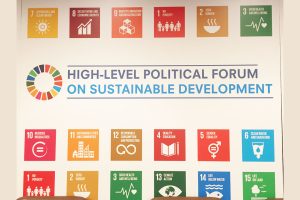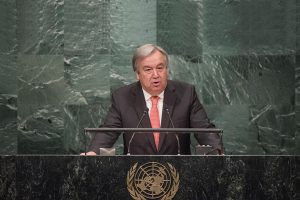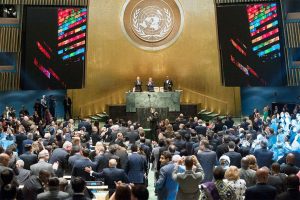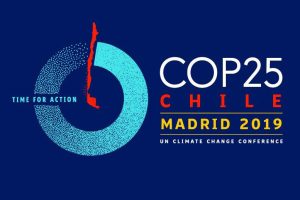14 February 2019: Nine coalitions are being established as part of preparations for the UN 2019 Climate Summit in order to ensure “transformative outcomes,” according to a briefing for Member States. The UN Secretary-General has asked several Heads of State and Government to lead in setting up the coalitions, with support from institutional bodies and the Executive Office of the Secretary-General.
Luis Alfonso de Alba, Special Envoy of the UN Secretary-General for the UN 2019 Climate Summit (also called the Climate Action Summit), updated governments on preparations in a briefing on 14 February 2019, in New York, US. UN General Assembly (UNGA) President Maria Fernanda Espinosa Garces shared information about a broader set of events leading to the 25th session of the Conference of the Parties (COP 25) to the UNFCCC, taking place in Chile in early 2020.
De Alba stressed, above all, the need for a focus on climate action. He said that since the Paris Agreement on climate change was reached, “we have perhaps done a third of the work that we ought to have done.” He cited a need for better perspective on failings, shortcomings and places to “plug the ambition gap.” He called for sending the global public “an optimistic signal” that it is possible to both counteract climate change and enjoy economic growth, eradicate poverty, and meet social, health care and human rights needs. De Alba also noted the need to overcome the unequal importance that has been accorded to adaptation and mitigation, particularly in financing. He said that in the focus on taking action, partnerships with civil society are needed “first and foremost,” as well as with the private sector, “whose behavior needs to change.”
Espinosa noted the importance of climate action for meeting the 2020 deadline for several targets under the 2030 Agenda for Sustainable Development. Overall, she said, two-thirds of the SDG targets depend on “action being taken at the climate and environmental level.”
De Alba outlined nine areas of work in preparation for the Climate Action Summit, and listed the countries that UN Secretary-General Antonio Guterres has approached to organize the coalitions:
- Increasing Mitigation Ambition (Japan and Chile);
- Energy Transition (Denmark);
- Infrastructure, Cities and Local Action (Kenya and Turkey);
- Industry Transition (India);
- Resilience and Adaptation (UK);
- Nature-based Solutions (China);
- Climate Finance and Carbon Pricing (France and Jamaica);
- Social and Political Drivers (Peru); and
- Public Mobilization (Marshall Islands).
The topics are described further on the Summit webpage.
Governments will form groupings with fellow governments and members of civil society. All multilateral organizations have a role to play, and are “enthusiastically on board,” de Alba said, noting that the World Bank is on board for championing financing for climate action, and the World Economic Forum (WEF) will provide the institutional framework for interaction between coalitions and the private sector, with a particular focus on the industry transition workstream.
Only the most concrete and transformative outcomes will be delivered at the Summit.
De Alba said the coalitions will have the support of his office and an institution that will be responsible for technical support. He introduced Anne-Sophie Cerisola as the Deputy Special Envoy for the Summit. A deadline of 22 February 2019 has been set for each coalition’s leader or leaders to submit their programme of work.
According to an Information Note issued in December 2018, the “facilitators” are appointed to ensure the development of transformative outcomes, and will work in coalitions until September 2019 to deliver “the most impactful outcomes” at the Summit. Only the most concrete and transformative outcomes will be “delivered” at the Summit.
While the coalitions begin their work, a series of climate events will take place in 2019, leading up to UNFCCC COP 25. Espinosa outlined these events, and noted that they share two goals: increasing ambition at the national level; and ensuring inclusion in processes of climate action.
First, on 28 March, the UNGA will convene a high-level meeting on “climate and sustainable development for all.” She said the meeting aims to build on the success of COP 24, which took place in November 2018, in Katowice, Poland, and make a “major contribution” to the Climate Action Summit. The meeting follows a mandate in UNGA resolution 72/219 calling for a meeting with an intergenerational focus that targets the synergies between climate action and the 2030 Agenda. The High-level Meeting will be a one-day event, and include panels on: synergies between climate action and the SDGs; and means of implementation. Roundtables for leaders will convene to facilitate the coalitions that are being established, directly linking the UNGA meeting to the Climate Action Summit.
From 30 June to 1 July 2019, the United Arab Emirates (UAE) will host a stocktaking meeting in Abu Dhabi, UAE. De Alba said this will serve as a preparatory summit for the Climate Action Summit. The meeting will review the reports of the nine coalitions, in order to identify the actions and partnerships that can be presented at the Summit. To be selected, he indicated that an action must be “meaningful” to different sectors, and to countries at different levels of development.
In July, the HLPF will hold an in-depth review of SDG 13 (climate action), in New York. In September, the Secretary-General will convene the 2019 Climate Summit, and from 24-25 September, the HLPF will meet at the level of Heads of State and Government. De Alba said the Climate Summit needs to identify where there are convergences of opinion and action that can be pursued. This approach will make climate change a central area of UN action.
As for the format of the Summit, de Alba described it as a three-day event beginning with side events and parallel activities on the preceding weekend, from 21-22 September. During the plenary meeting on 23 September, he said the programme does not envision individual statements, but rather proposals for climate action representing the fruit of the coalitions’ discussions, being submitted for consideration by everyone.
De Alba concluded by expressing an expectation for clear timelines and responsibilities to result from the Summit. He suggested setting 2020 as the deadline for all Member States to complete their Nationally Determined Contribution (NDCs) process, and 2025 as the “next step in judging national action and ambition.” He said the Climate Action Summit could also produce a clear road map for the following 12 years, with a view to keeping the global average temperature rise below the “guardrail” of 1.5°C.
In an interactive discussion with Member States, the UAE took the floor to express her vision that the stocktaking meeting in June-July will represent the “synthesizing and strengthening point for all content” from the UNGA’s March meeting, the nine coalitions, and the Special Envoy’s steering committee, and will provide “a sounding board” for announcements to be made in September. She observed that climate change is both “the defining threat of our time” and an unprecedented opportunity for innovation, sustainable growth and partnership. She stressed that climate action is “not just about flora and fauna, but about people,” and there is a business case for climate action. For example, solar and renewable energy is now cheaper than other options in many countries, and every US dollar spent to reduce high-emission sources of greenhouse gases (GHGs) brings savings of over 300% in avoided health costs. “These are the narratives we must bring to the fore,” she said.
Among other countries that took the floor, Belize, for the Alliance of Small Island States (AOSIS), said the detrimental impacts of climate change on small island developing States (SIDS) significantly increase even with a 1.5°C temperature rise, as outlined in detail by the 2018 report of the Intergovernmental Panel on Climate Change (IPCC). She encouraged linkages between climate action events and the mid-term review of the SAMOA Pathway, as well as ocean-related processes.
Morocco called for viewing climate change “an opportunity for achieving sustainable development, rather than a threat to humanity.” He noted an early February meeting of the UN Group of Friends for Climate, which is co-chaired by France and Morocco, saying the meeting had echoed the need to increase ambition.
The UK said that the UN Development Programme (UNDP) is the institutional partner for the Resilience and Adaptation coalition. Italy reiterated the need for coherence between the events, and supported putting climate at the core of the agenda in 2019.
Mexico said it will contribute to the coalition on cities, and highlighted the need for “a cultural change” in how we consume and live. He expressed hope that “sustainable development for all” will be a lens through which SDG 13 is reviewed at the HLPF meeting in July.
South Africa called for adequate consideration of the role of public sector financing from developed countries in empowering climate action in developing countries. He explained that adaptation, in particular, does not easily lend itself to profit-oriented business models.
Poland said that in 2019 it will further explore the three themes of its COP 24 presidency: just transition; forests; and electromobility. He highlighted the need to give particularly prominent recognition to “just transitions,” as social responsibility should be a stronger feature of efforts to save the planet.
In closing remarks, de Alba said he will produce a note on the main objectives of the Summit. Espinosa said three key words from the discussion are coherence, accountability and ambition, noting that the NDCs must be seen as the “floor rather than ceiling.”
In addition to the events outlined during this briefing, the UNFCCC and UN Department of Economic and Social Affairs (DESA) will hold the First Global Conference on Synergies between the 2030 Agenda and Paris Agreement, in Copenhagen, Denmark, from 1-3 April 2019. The conference will serve as the Expert Group Meeting (EGM) in preparation for the HLPF’s in-depth review of SDG 13 in July. [UN News Story on Briefing] [2019 Climate Summit Webpage] [Briefing Webcast]





